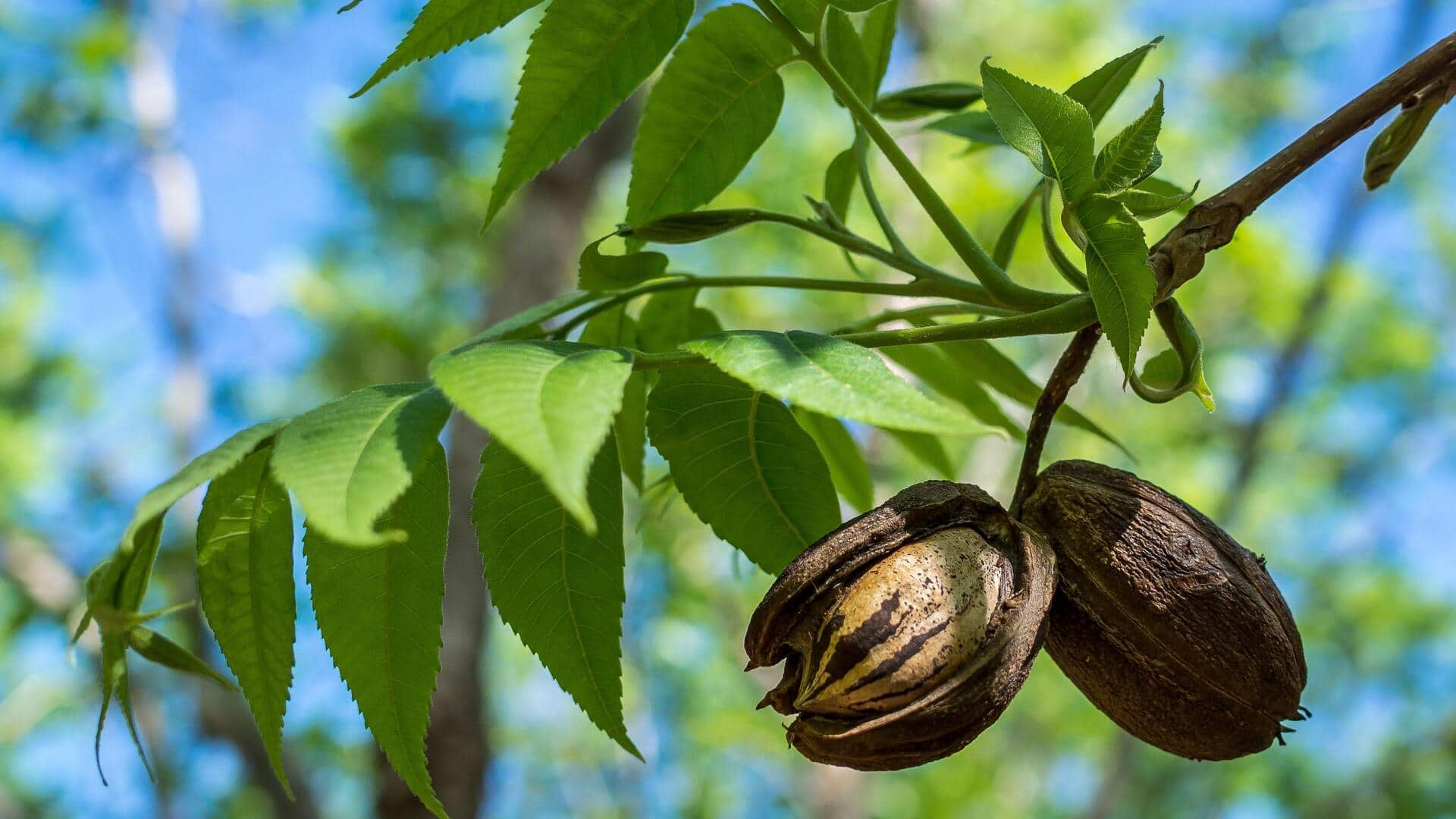
How to grow pecan trees at home—it's simple!
What's the story
Cultivating pecan trees in the comfort of your large garden yard can be a fruitful hobby for nut lovers seeking to enjoy fresh harvests right from their backyard. These trees offer more than just tasty nuts; they also enhance the beauty of your garden with their grand and majestic presence. This article will provide you with the key steps and considerations for successfully planting and nurturing pecan trees at home.
Variety selection
Choosing the right variety
Choosing the right variety of pecan tree is key to its success and productivity. Factors like climate adaptability, disease resistance, and nut size should be considered when choosing a variety. Popular varieties include 'Desirable', 'Stuart', and 'Cape Fear'. Each variety offers unique characteristics suited to different growing conditions and personal preferences.
Planting process
Planting your pecan tree
Plant your pecan tree during the dormant season, preferably between late fall and early spring. Choose a location with full sun and well-draining soil. Dig a hole twice as wide as the root ball and just as deep. Place the tree in the hole, backfill with soil, and water thoroughly. Space trees 35 to 40 feet apart to accommodate their large size at maturity.
Water & feed
Watering and fertilization needs
Pecan trees need regular watering, particularly in the initial years and while setting nuts. Water them thoroughly once a week in times of drought. From the second year of planting, apply a balanced fertilizer in early spring before the new growth starts. Use approximately $10 worth of fertilizer for each inch of trunk diameter measured at knee height.
Pruning essentials
Pruning for health and productivity
Pruning is essential for promoting tree health, stimulating growth, and enhancing nut production. During winter or early spring before new growth begins, eliminate dead or diseased branches and remove any that cross over or grow inward toward the trunk. This allows sunlight to reach the canopy and improves air circulation around the tree.
Pest control
Pest management strategies
Pecans are vulnerable to pests like aphids, weevils, and diseases like pecan scab fungus. These issues can harm tree health and reduce nut yield. Implementing an integrated pest management strategy is key. This involves regular monitoring for pests, maintaining cleanliness by removing fallen nuts and leaves that could harbor pests or diseases, and applying appropriate organic or chemical treatments based on the identified pest.